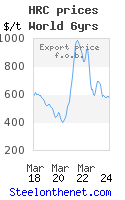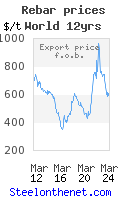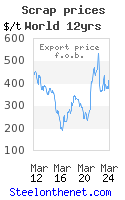Ever since the break-up of the Soviet Union in 1991, the three largest steel producers have been China, Japan and the US. Before China secured the top slot in 1996, the largest producer had been Japan. Since then, Japan has remained the second largest steel maker with output in 2016 totalling 105 million tonnes. This status quo is being threatened by India where, over the same time frame, production has increased four-fold to nearly 97 million tonnes. In addition, India overtook the US to become the third largest global producer in 2015.
So far this year, Indian crude steel production has increased by a further 6% whereas Japan has seen production remain broadly flat. If this rate of growth continues into December, Japanese production would be 104 million tonnes and Indian production would have hit 101.5 million tonnes for the year. Whilst it is unlikely that India will displace Japan this year it should overtake Japan next year to become the second largest steel producer.
In recent years, India has been exporting and importing similar quantities of steel but this has diverged considerably in the year to date 2017. Imports have declined by 13% whereas exports have increased by 67%. The huge jump this year represents a record total but globally India is still a relatively modest exporter, shipping less than half the tonnage of Japan. Despite this, given the huge quantities of steel being produced in the country, the big jump in exports should act as a warning sign to other global producers.
Most of India’s exports are concentrated on flat products and India is a net exporter of HRC, CR and HDG products. Exports of hot rolled coil have more than trebled so far this year and in the year to September they have hit nearly hit 4 million tonnes. The main destination for this HRC is Vietnam, which has increased more than five-fold to 1.2 million tonnes, replacing some of the tonnage that China had been supplying There has also been growth in shipments to Europe with a four-fold increase in exports to Italy and a doubling of shipments to Belgium at 593 thousand tonnes and 215 thousand tonnes respectively.
Going forward, India is almost certain to overtake Japan as the second largest producer of steel next year. Historically much of India’s production has been consumed internally, and this remains the case, but the massive growth in exports this year suggests that this scenario has the potential to change. India is already making an impact on the global steel market and should projected domestic demand growth not materialise, Indian exports have the potential to become very significant.
This post was prepared by the Iron and Steel Statistics Bureau. You can visit ISSB at http://www.issb.co.uk.
Labels: Indian steel, indian steel industry, steel industry in india, world steel production



